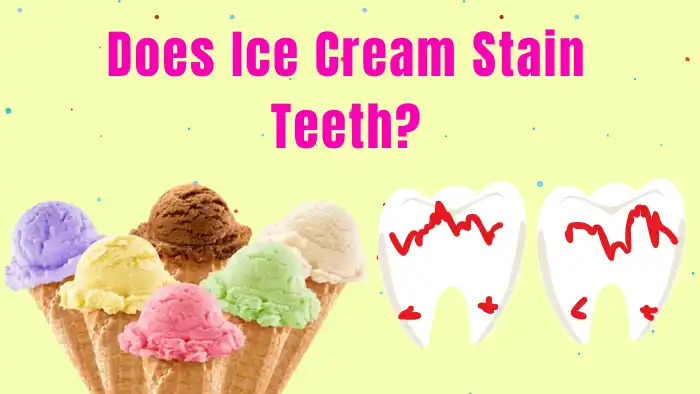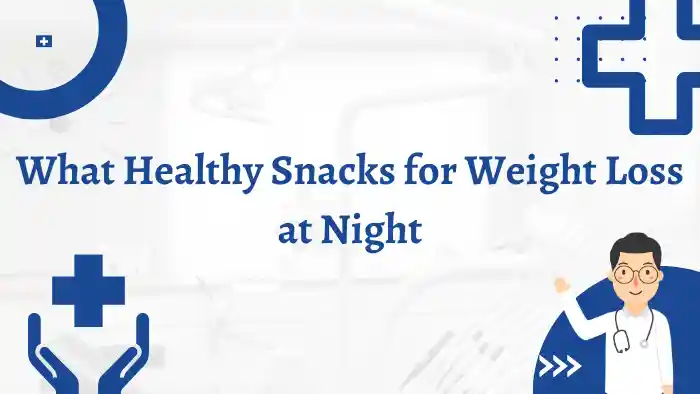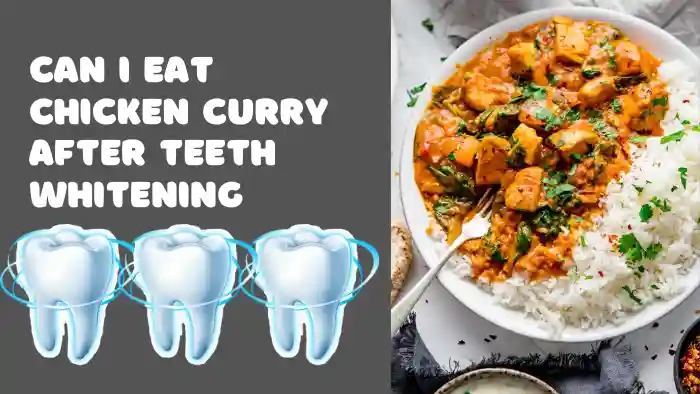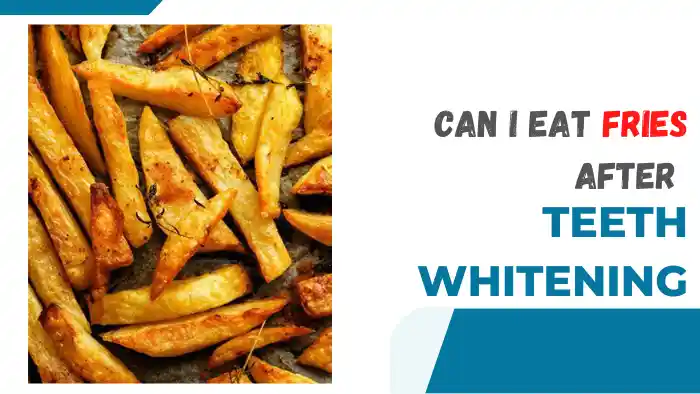The ice cream itself isn’t a major cause of tooth staining due to its light color. However, consuming it with or after strongly pigmented foods or drinks could contribute to staining. Good oral hygiene helps prevent this.
We all scream for ice cream! That delightful frozen treat is a universal favorite, satisfying our taste buds with its creamy goodness.
But as we indulge in this frosty delight, a question often crosses our minds:
Does ice cream stain teeth? In this article, we’ll explore the colorful world of ice cream and its potential impact on our pearly whites.
The Anatomy of Ice Cream
Before delving into the staining potential, let’s break down the components of ice cream.
This frozen dessert typically consists of milk, cream, sugar, and flavorings, all blended to create a delectable mixture.
The Role of Sugars
Ice cream’s sweetness is derived from sugars, which can interact with the natural bacteria in our mouths to form acids.
These acids, if not properly managed through oral hygiene, can weaken the enamel and make teeth susceptible to staining from other foods and beverages.
Pigmented Flavors and Artificial Dyes
Certain ice cream flavors are loaded with pigments from natural sources or artificial dyes to create vibrant hues.
Flavors like chocolate, berries, and coffee can contain pigments that, over time, might adhere to dental enamel, causing discoloration.
Temperature Sensitivity
Ice cream’s chilly nature can play a role in dental staining.
Extremely cold temperatures can cause temporary contraction of the teeth, potentially creating micro-fractures that trap pigments and particles from colorful foods and drinks.
Prevention and Maintenance
Fear not, ice cream enthusiasts! There are several steps you can take to enjoy your favorite treat without worrying about teeth staining:
Brush and Floss Regularly
Maintaining a consistent oral hygiene routine is crucial. Brushing and flossing after consuming ice cream and other sugary treats can help prevent the buildup of acids and pigments.
Rinse with Water
Swishing water around your mouth after indulging in ice cream can help wash away sugars and particles that might lead to staining.
Use a Straw
When enjoying ice cream floats or shakes, consider using a straw to minimize contact between the dessert and your teeth.
Opt for Light-Colored Varieties
Choosing lighter-colored ice cream options might reduce the risk of pigment adhering to your teeth.
The Verdict on Ice Cream and Staining
While ice cream contains elements that could potentially contribute to dental staining, the occasional indulgence is unlikely to cause significant discoloration. The key lies in moderation and proper oral care.
Pros
- One of the best things about ice cream is the vast array of flavors available. From classic vanilla and chocolate to adventurous combinations like cookie dough or mint chocolate chip, there’s something for everyone. This variety allows you to satisfy your cravings and explore new taste sensations.
- Ice cream has long been associated with happiness and nostalgia. Just one spoonful can transport you back to carefree childhood days or create moments of joy in adulthood. The creamy texture and sweet taste provide an instant mood boost, making it an ideal treat during stressful times.
- Believe it or not, ice cream can be a source of calcium! Many brands fortify their products with this essential mineral, which plays a crucial role in maintaining healthy teeth and bones.
- Enjoying ice cream often goes hand-in-hand with socializing and creating memories with loved ones. Whether it’s sharing a sundae at an ice cream parlor or hosting an at-home dessert party, this frozen delight can bring people together and foster connections.
- The sensation of eating ice cream is undeniably delightful; the coldness against your tongue coupled with its smooth texture creates a sensory experience like no other food item out there!
Cons
- One of the main cons of ice cream is its high sugar content. When we consume sugary foods, bacteria in our mouths feed on these sugars and produce acids that can erode tooth enamel over time.
- Many types of ice cream contain acidic ingredients such as citric acid or tartaric acid, which can further damage tooth enamel. These acids can weaken the protective layer of your teeth, making them more susceptible to stains and sensitivity.
- Some people may experience sensitivity when eating cold treats like ice cream, especially if they already have sensitive teeth or exposed dentin. The extreme temperature changes from consuming icy desserts could cause discomfort or pain in their teeth.
- While it may not be as notorious for staining as other food and drink items like coffee or red wine, ice cream does have some potential to stain teeth due to its dark-colored flavorings such as chocolate or berry-based ones.
- If you have dental work such as fillings, crowns, or veneers, be cautious when consuming ice cream because it can stick to these restorations and potentially dislodge them.
The Science Behind Teeth Stains

Your teeth are covered by a protective layer called enamel, which is strong and resilient. However, it’s not completely impervious to stains. Tooth staining occurs when pigmented molecules from certain foods and beverages adhere to the porous surface of your enamel.
The main culprits behind teeth stains are chromogens – compounds with strong color pigments that can easily latch onto your teeth. These chromogens can be found in various everyday foods and drinks, such as coffee, tea, red wine, berries, and even tomato-based sauces.
Another factor that contributes to tooth staining is tannins. Found in many types of food and beverages like wine and black tea, these plant-derived compounds have a knack for clinging onto dental enamel.
Additionally, acidic substances can play a role in staining your pearly whites. Acidic foods like citrus fruits or vinegar-based dressings temporarily soften the enamel surface making it easier for chromogens to penetrate.
But don’t worry! Your mouth has its defense mechanism against stains – saliva production. Saliva helps wash away debris from your teeth while neutralizing acid levels in your mouth. This natural cleansing process assists in preventing stain-causing substances from leaving their mark on your smile.
Understanding the science behind teeth stains gives us insight into how different factors contribute to discoloration on our precious pearly whites. Armed with this knowledge let’s explore whether ice cream falls into the category of stain-inducing treats or if we can enjoy it guilt-free!
Common Foods That Cause Stains
When it comes to our teeth, maintaining a pearly white smile is often a top priority. However, certain foods can leave unsightly stains on our precious enamel. It’s important to be aware of these culprits if you want to keep your smile looking its best.
One common offender is coffee. Many people rely on their morning cup of joe to kick-start their day, but the dark pigments in coffee can easily seep into the microscopic cracks and crevices of your teeth, leaving behind stubborn stains that are hard to remove.
Tea is another beverage that can lead to tooth discoloration. Whether you prefer black tea or herbal varieties, the tannins found in tea can gradually stain your teeth over time.
Red wine enthusiasts may also need to be mindful of how this beloved libation affects their smiles. The deep red hues in wine contain chromogens, which are highly pigmented molecules that attach themselves to tooth enamel.
Dark berries such as blueberries and raspberries may be packed with antioxidants and health benefits, but they also have strong staining potential for our teeth due to their intensely pigmented nature.
Curry lovers should take note as well – while curry dishes may offer tantalizing flavors and aromas, they often contain spices like turmeric that have intense yellow pigments capable of leaving lasting stains on teeth.
So next time you indulge in any of these stain-causing foods, consider taking some preventive measures or following up with oral hygiene practices such as brushing or rinsing your mouth afterward. Remember: prevention is key when it comes to maintaining a bright and beautiful smile!
How Does Ice Cream Affect Teeth?
Its creamy texture and sweet taste make it a go-to dessert for many. But have you ever wondered how ice cream affects your teeth?
When we consume ice cream, our teeth come into contact with sugars and acids present in the frozen treat. These substances can lead to tooth decay and enamel erosion over time. The high sugar content in ice cream provides fuel for the bacteria in our mouths, which produce acid as they break down the sugars. This acid can erode the protective layer of enamel on our teeth, making them more susceptible to staining.
Additionally, some types of ice cream contain artificial colors that can contribute to tooth discoloration. These pigments can stick to the porous surface of our teeth, leaving behind unsightly stains.
But don’t fret! There are ways to minimize the effects of ice cream on your pearly whites. First and foremost, practicing good oral hygiene is key. Brushing your teeth twice a day with fluoride toothpaste and flossing regularly helps remove plaque buildup and reduces the risk of stains.
Another tip is to enjoy your ice cream in moderation or opt for healthier alternatives such as sugar-free or low-sugar options. Additionally, rinsing your mouth with water after consuming sugary treats can help wash away some of the residue left behind.
Preventing Stains from Ice Cream
We all love indulging in a creamy scoop of ice cream, especially on a hot summer day. But have you ever wondered if this sweet treat could be staining your pearly whites? The answer is yes, it can!
Ice cream contains pigments called chromogens that are responsible for its vibrant colors. These chromogens can latch onto the enamel of our teeth and cause discoloration over time. However, there are ways to prevent stains and still enjoy your favorite frozen delight.
Consider enjoying ice cream in moderation. Limiting your consumption can help minimize the chances of stains forming on your teeth. Additionally, you can try using a straw when savoring your ice cream treats. By doing so, you reduce the direct contact between the cold dessert and your teeth.
Another preventative measure is to rinse your mouth with water after indulging in ice cream. This simple step helps wash away any sugars or acids that may linger on the surface of your teeth.
Furthermore, practicing good oral hygiene is crucial for preventing stains caused by ice cream or any other food item for that matter! Regular brushing and flossing will help remove plaque buildup and keep your smile bright.
Consider opting for lighter-colored flavors like vanilla or mint instead of dark chocolate or berry-based ones. Lighter-colored ice creams are less likely to leave noticeable stains on tooth enamel.
Alternative Options for Satisfying Your Sweet Tooth
If you have a sweet tooth but want to avoid the potential stains that ice cream can cause, fret not! There are plenty of alternative options available that will satisfy your cravings without compromising the beauty of your pearly whites.
One great option is frozen yogurt. Not only does it come in a wide variety of flavors, but it also contains less sugar and fat compared to traditional ice cream. You can even top it with fresh fruit or nuts for an extra crunch and added nutritional value.
Another delicious substitute is sorbet. Made from fruit juices or purees, sorbet offers a refreshing and tangy taste without any dairy content. It’s lighter on calories and won’t leave behind those unsightly stains on your teeth.
For those who want something creamy like ice cream but without the staining effects, consider trying coconut milk-based frozen desserts. They offer a rich and velvety texture while being free from lactose and often lower in sugar.
If you’re feeling adventurous, why not give homemade popsicles a try? By using natural ingredients such as blended fruits or yogurt mixed with honey, you can create tasty treats that are both healthy and satisfying.
Importance of Good Oral Hygiene
Regular brushing and flossing help prevent tooth decay, gum disease, and other oral health issues. By keeping your teeth clean and free from plaque buildup, you can significantly reduce the risk of stains.
In addition to regular brushing and flossing, it’s important to visit your dentist regularly for professional cleanings. A dental cleaning can remove any stubborn stains that may have accumulated over time.
Another essential aspect of good oral hygiene is watching what you eat and drink. While ice cream may not directly stain teeth, consuming sugary treats like this in excess can lead to cavities and tooth discoloration. It’s important to practice moderation when indulging in sweet treats like ice cream.
Using a straw while enjoying cold beverages can also help minimize contact between the liquid and your teeth, reducing the potential for staining.
Maintaining good oral hygiene habits such as regular brushing, flossing, visiting the dentist regularly, moderating sugar intake, and using straws when consuming sugary drinks can all contribute to preventing stains on your teeth.
Conclusion
The experience of eating ice cream need not be marred by concerns about tooth staining.
By embracing moderation, maintaining oral hygiene, and making informed choices, you can enjoy your favorite frozen treat without compromising your radiant smile.
Frequently Asked Questions
Is all ice cream capable of staining teeth?
Not necessarily. While some pigmented flavors might have a higher staining potential, regular oral care can help mitigate the effects.
Can I enjoy ice cream if I have teeth whitening treatments?
Yes, but it’s advisable to wait a short while after treatments to allow your teeth’s enamel to rehydrate and strengthen.
Are there stain-resistant ice cream options?
Some manufacturers offer “stain-resistant” ice cream, but it’s important to remember that oral care remains the primary defense against staining.
How often should I brush my teeth if I consume ice cream regularly?
Brushing twice a day and after consuming sugary foods is generally recommended.
Can ice cream harm your teeth?
Extremely cold temperatures can potentially cause sensitivity, so savor your frozen treats mindfully.
Does ice cream stain teeth?
After examining the pros and cons of ice cream’s effects on teeth, it is safe to say that while it may cause temporary discoloration or sensitivity, it does not typically lead to long-term staining. The high sugar content in some ice creams can contribute to tooth decay if proper oral hygiene practices are not followed. However, regular brushing, flossing, and dental check-ups can help mitigate any potential negative effects.
Can professional whitening treatments reverse stains caused by eating ice cream?
Professional whitening treatments performed by dentists can effectively lighten surface stains caused by various factors including diet choices like consuming colored foods or beverages. However, it is important to note that maintaining good oral hygiene habits alongside these treatments will yield better results and prevent future staining.
Are there any alternatives to traditional ice creams that are less likely to stain teeth?
Yes! If you’re concerned about staining but still want a sweet frozen treat, consider trying dairy-free options such as sorbets or non-dairy “ice creams” made with alternative ingredients like coconut milk or almond milk. These options tend to have lower sugar content compared to conventional ice creams.
How can I prevent stains from ice cream?
To minimize the risk of stains from indulging in your favorite frozen treat, here are a few tips:
Rinse your mouth with water after consuming ice cream to help remove any sugary residue.
Consider using a straw when enjoying cold treats like milkshakes or floats to minimize contact between the ice cream and your teeth.
Limit your overall consumption of sugary foods and drinks for better oral health.

A Blogger, Author and Researcher! Gohar Aalam is recognized as a full-time blogger for Health and Tech Niches. I’m a Fountainhead of Gethealthup.com, will provides high quality knowledge.








